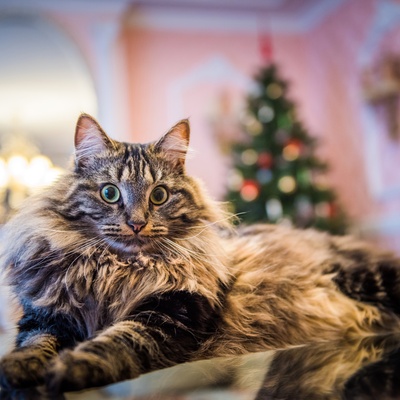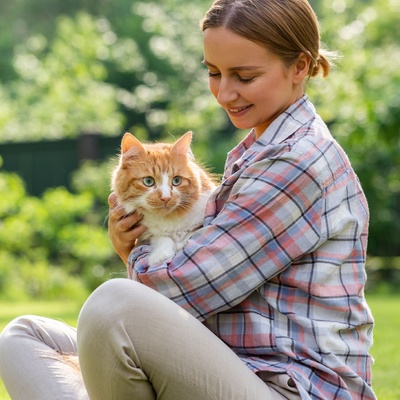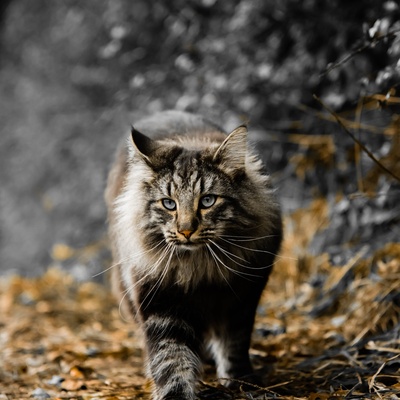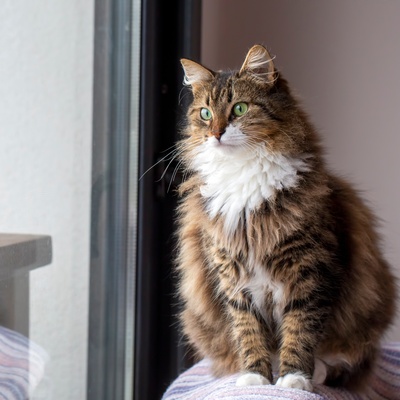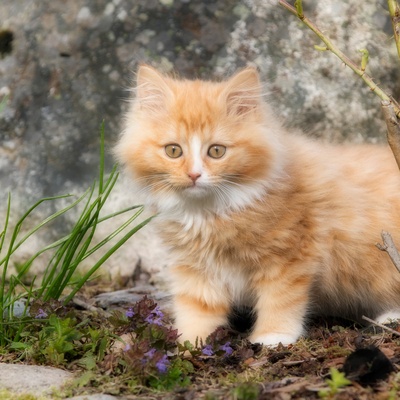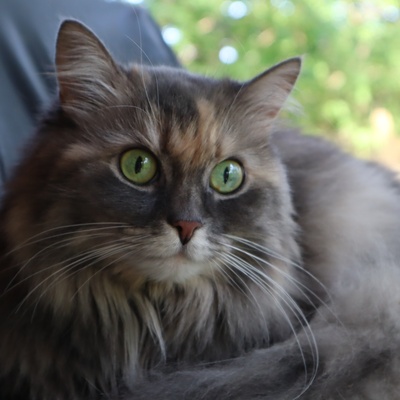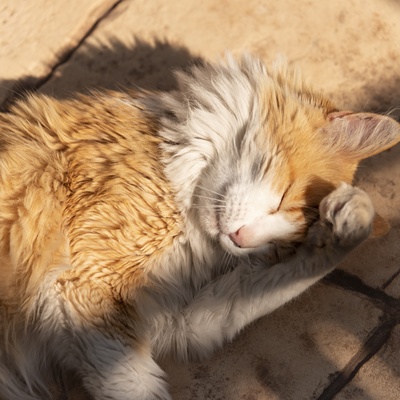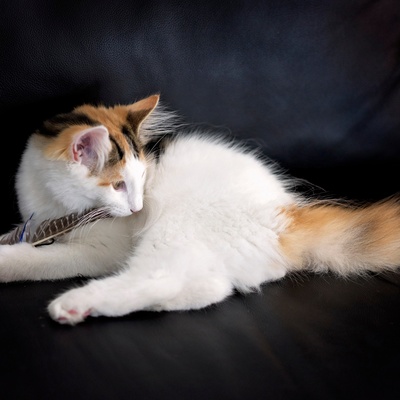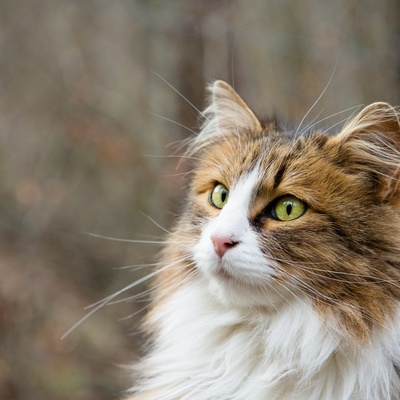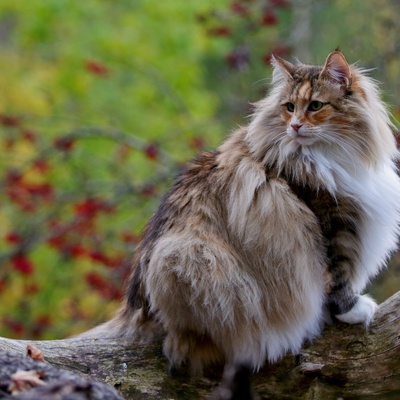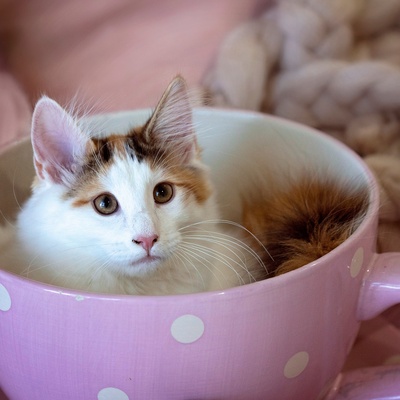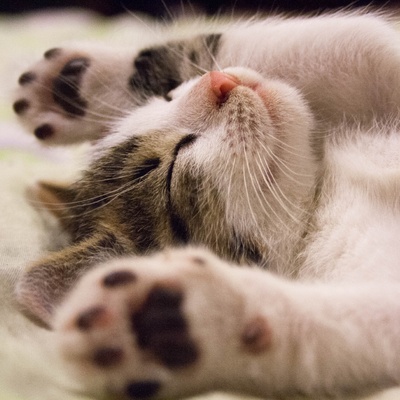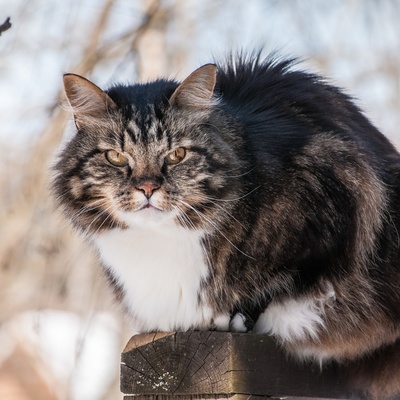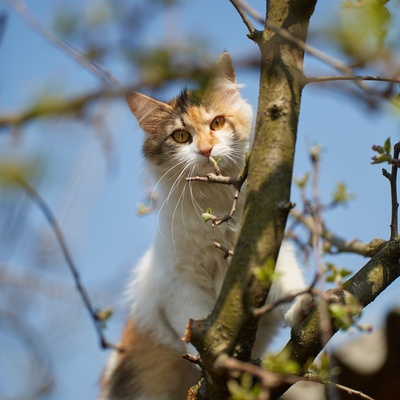Introducing the Norwegian Forest cat
Discover everything there is to know about the Norwegian Forest cat : its characteristics, its behaviour, its training and how much one costs.

Discover everything there is to know about the Norwegian Forest cat : its characteristics, its behaviour, its training and how much one costs.
The Norwegian Forest cat stands out as a majestic breed. Originating from the cold climes of Norway, this breed boasts a lineage that includes the robust domestic cats of early Norse settlements and possibly even the long-haired cats brought by the Vikings from the Near East. These historic roots give the Norwegian Forest a striking appearance, characterized by a luxurious, water-resistant coat and a sturdy build.
Known for their high energy and playful nature, these cats are more adventurous explorers than lap cats.
This section outlines the unique features of the Norwegian Forest breed.
The Norwegian Forest cat is a large and sturdy breed, typically standing around 12 to 18 inches tall and weighing between 12 and 20 pounds.
This breed sports a long, lush double coat, designed to protect against harsh climates, with a water-resistant top layer and a thick undercoat.
Despite their thick coats, Norwegian Forest cats are not known to be hypoallergenic, and may not be the best choice for individuals with severe cat allergies.
They come in a variety of colors and patterns, ranging from solid to tabby, with shades including black, white, blue, red, and cream.
These cats thrive in various environments but appreciate spaces where they can climb and explore, ideally with access to safe outdoor areas.
Known for their friendly and sociable nature, Norwegian Forest cats generally get along well with children and other animals, making them great family pets.
They are typically healthy with a robust constitution, but they can be prone to certain genetic conditions like hypertrophic cardiomyopathy.
Intelligent and receptive, Norwegian Forest cats respond well to positive reinforcement training, making them relatively easy to train with patience and consistency.
We can help you!
Every cat has its own character and specific needs. Making the right choice will ensure his well-being and yours.
Thanks to our quiz, you'll know which breed is right for you, depending on your lifestyle, expectations and many other criteria.
Don't wait any longer and take the quiz to find out the answer!
The Norwegian Forest cat, with its lush, dense coat and large, alert eyes, resembles a regal guardian of the forest, evoking images of a snowy Nordic landscape.
The Norwegian Forest cat is notably large and robust, commanding attention with its impressive size. Males are typically heavier than females, with males weighing between 13 to 20 pounds and females between 9 to 12 pounds.
They are late bloomers, reaching their full physical maturity at around 3 to 4 years of age. This breed is characterized by a broad frame, powerful muscular build, and a notably long, bushy tail, further accentuating their majestic presence.
The Norwegian Forest cat boasts a long, flowing coat that is both dense and water-resistant, perfect for its origin in the cold, wet Norwegian climate. The texture is soft and silky, with a woolly undercoat for insulation and longer guard hairs on top. This coat often features a ruff around the neck, tufts at the ear tips, and a bushy, plume-like tail.
The Norwegian Forest cat is not considered to be a hypoallergenic breed.
The Norwegian Forest cat's coat comes in a wide range of colors and patterns, reflecting the breed's natural adaptation to various environments. Common colors include black, white, blue, red, cream, and silver, often presented in solid, tabby, or tortoiseshell patterns. The breed's stunning coat can also exhibit bi-color or even tri-color variations, adding to its majestic and wild appearance.
The Norwegian Forest cat is distinguished by its majestic appearance, characterized by large, triangular ears with tufts similar to a lynx, a robust and muscular body with strong bones, a well-proportioned muzzle, and large, almond-shaped eyes in shades of green, gold, or copper. These features combine to give the breed an elegant and powerful look.
Grooming a Norwegian Forest cat requires regular brushing, at least twice a week, due to their long, dense coat. During shedding seasons, primarily in spring and fall, it's advisable to increase the frequency of brushing to manage the increased shedding.
Bathing these cats can be done periodically, using a cat-specific shampoo, though it's generally not necessary due to their self-grooming habits. The occasional bath, however, can help in keeping their luxurious coat in pristine condition.
The Norwegian Forest cat is known for its calm, gentle temperament. These cats are friendly, intelligent, and adaptable, making them a delightful addition to any household.
Norwegian Forest cats are recognized for their sociable and easy-going nature. They often form strong bonds with their owners, frequently following them from room to room, demonstrating their loyalty and affection.
Despite their size, they are gentle and enjoy both playtime and extended cuddle sessions. They communicate through soft vocalizations, including purring and meowing, expressing their needs and affection. This breed thrives on attention and benefits from an owner who can provide consistent interaction and companionship.
The Norwegian Forest cat exhibits a calm and patient demeanor, making them excellent companions for families, including those with children, dogs, and other cats. They are sociable and enjoy being part of a lively household.
When overwhelmed, they prefer to retreat and find a quiet space rather than display aggression. Their non-confrontational nature and ability to adapt to various social situations make them ideal pets for a harmonious home environment.
The Norwegian Forest cat is highly adaptable to various environments, easily adjusting to both indoor and outdoor living. They thrive when their owner is present and engaged, as they form strong bonds. Ideally, they should live in a place that allows them ample space to climb and explore, satisfying their innate curiosity and need for physical activity.
If you're concerned about losing track of him, you can equip him with a GPS collar that will allow you to follow his activities and find him if he runs away.
The Norwegian Forest cat is an active and intelligent breed that requires regular mental and physical stimulation to stay content. Interactive play with the owner not only strengthens the bond but also keeps the cat mentally sharp and physically fit.
Without adequate stimulation, they may resort to destructive behaviors due to boredom. It's also important to provide them with serene spaces where they can retreat and relax, ensuring their overall well-being.
Early training is crucial for Norwegian Forest cats, as delayed training can lead to ingrained bad habits. Their education should be grounded in kindness, attention, reward, and firmness, with consistency being key.
They respond well to training that incorporates play, which can effectively aid in mental stimulation and prevent undesirable behaviors. Engaging them in playful learning activities encourages good behavior and strengthens the human-cat relationship.
Choosing a cat that matches your personality and lifestyle will ensure your well-being and his!
The Norwegian Forest cat, known for its rugged and hearty nature, is generally robust when it comes to health. This breed does not commonly exhibit breed-specific health problems, reflecting its resilience and strong constitution.
The Norwegian Forest cat is generally healthy but may be susceptible to hereditary conditions like hypertrophic cardiomyopathy and polycystic kidney disease. Regular DNA testing and veterinary check-ups are important for early detection and management of such conditions.
Routine care for these cats includes vaccinations, parasite control, dental hygiene, and grooming to prevent infections and maintain coat health. A balanced diet suited to their age and activity level is also crucial. With consistent and proper care, Norwegian Forest cats can lead long and healthy lives.
The Norwegian Forest cat needs a high-quality diet, primarily nutritionally balanced kibble, supplemented with green vegetables for hydration and kidney health. They are slow to reach full size, usually by 3 to 4 years, requiring a controlled and consistent diet with the same kibble brand and regular feeding times. Careful monitoring and adjustment of their diet are essential for their proper growth and overall health.
Despite their calm demeanor, Norwegian Forest cat enjoy activities and should be encouraged to engage in play to maintain a healthy weight. They may have a propensity to gain weight, especially if they lead a more indoor, sedentary lifestyle.
Therefore, it's important to balance their diet with regular exercise. Engaging them in interactive play sessions not only keeps them physically active but also provides mental stimulation, crucial for their well-being. Regular playtime with their owners is an excellent way to ensure they remain active and healthy.
The Norwegian Forest cat, a cherished and admired breed, is available through various breeders. Before diving into adoption, it’s important to consider several factors that impact your choice.
Norwegian Forests, as purebred cats, are typically bred by professional breeders or in catteries. It’s crucial to visit these breeding sites to observe the living conditions and ensure they meet high standards.
From June 10, 2024 you must have your cat microchipped by the age of 20 weeks old and register its details in a relevant database such as Petlog or The Governing Council of the Cat Fancy (GCCF). This is a legal requirement in Britain, and failure to comply could result in a fine of
.
It’s also important to check for health examinations and DNA tests conducted on the kitten and its parents to identify any potential hereditary health issues.
The cost of acquiring a Norwegian Forest cat can vary based on factors like lineage, pedigree, the breeder's reputation, and the cat’s age. Generally, the price for a kitten ranges from
to
. The choice of adopting an adult cat might be more economical.
In addition to the purchase price, there are ongoing costs for care, including food, grooming, and healthcare. The annual cost for maintaining a Norwegian Forest cat is estimated to be around
to
.
Owning a Norwegian Forest is a long-term commitment, and their average lifespan is between 14 to 16 years. It’s a decision that requires thorough consideration and planning.
Choosing a cat that matches your personality and lifestyle will ensure your well-being and his!
To access the most relevant information, suitable payment methods, and delivery in your region, please select the website corresponding to your country.
